Vincent Cirelli and his team are back on The Art of VFX. This time, they talk about their work on THOR.
What is your background?
Vincent Cirelli is the supervising creative at Luma Pictures with more than 40 films to his credit. With a background in art direction and years of practical, hands-on experience in visual effects production, he possesses the rare combination of artistic and technical skills necessary to lead large teams of artists on complex visual effects projects.
How was your collaboration with director Kenneth Branagh and Production VFX supervisor Wesley Sewell?
Payam Shohadai, Executive VFX Supervisor // We worked closely with Wes throughout the job to bring Kenneth and Marvel?s vision of Thor to life, exploring theoretical topics such as the motivation behind the movement for a metal suit of armor, and the « science » behind Thor’s physical transformation from a mortal back into a god. We really enjoyed examining the various ways to meld and integrate elements of Thor’s mystical world into the grounded reality of « Midgard » (Earth) in a believable and photo-realistic way.
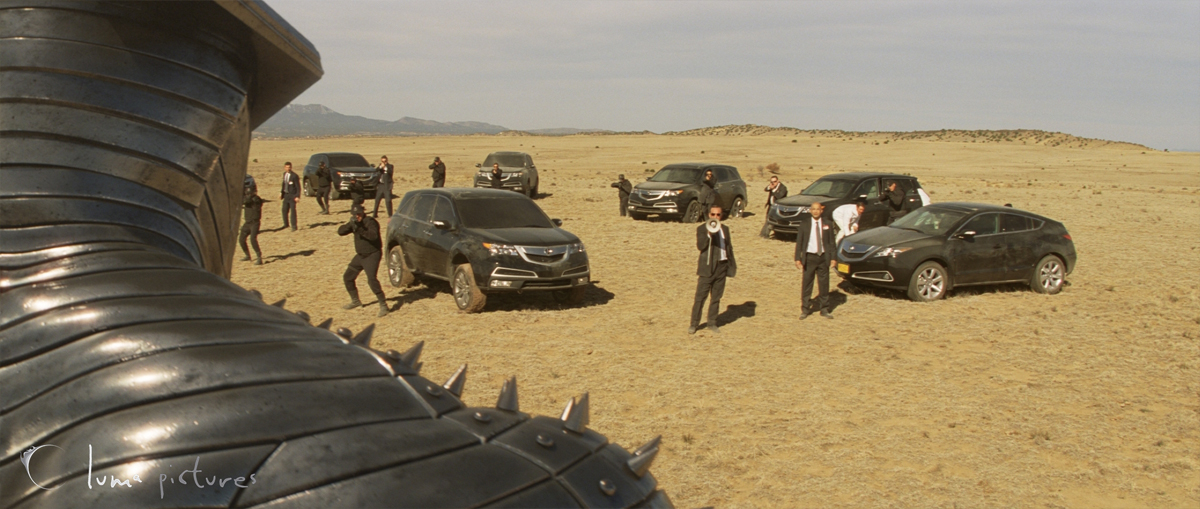 |
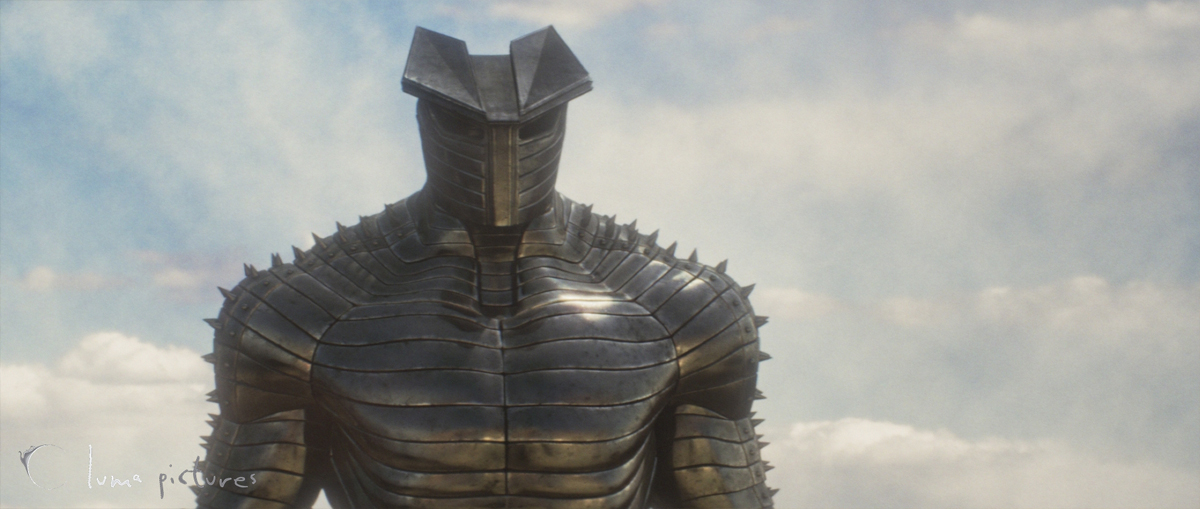 |
How did Luma Pictures get involved in this project?
Payam Shohadai, Executive VFX Supervisor // Our Director of Business Development, Lindsay Hallett had previously worked with client side VFX Supervisor, Wesley Sewell, so when she landed here at Luma, they reunited and established the relationship between Luma, Wes and Marvel. In the initial meeting, it was decided that Luma would do a test based on a very art directed type of storm described by Wes. In just a handful of weeks, Luma pulled out all the stops and created a full sequence, sound and all and won a fantastic piece of the film.
What are the sequences created by Luma Pictures?
Steve Griffith, VFX Producer // Luma did over 300 shots on the film. Some of the larger sequences included the opening sequence where Thor comes to Earth, the amazing battle between Thor and The Destroyer and the Bifrost arrival effect on Earth. Luma also contributed casket FX, a desert town extension and various miscellaneous FX.
Can you tell us what information you received to create the arrival of Thor on Earth?
Steven Swanson, Senior Producer // Luma had a meeting with Wes very early on in which he passionately explained the moment Thor comes to Earth and why. Beyond the customary storyboards, previz, onset reference, and conceptual artwork, we received a fascinating array of reference materials involving rocket-engines, tornadoes, storm-clouds, lightning, and aurora borealis. It was great fun doing research for Thor.
How did you create the storm?
Vincent Cirelli, VFX Supervisor // Luma developed the Bifrost Storm sequences that deliver Thor, The Destroyer and The Warrior Three to Midgard (Earth). The event is a carefully choreographed series of effects that begin as an aurora borealis, and builds into a churning supercell sheathing the portal mechanism, the Rainbow Bridge.
We defined the sequence using detailed concept art and animated primitives to block out the look and timing of the shots. In parallel, a partitioning system and visualization tool was developed that allowed us to art direct and proof out simulations quickly without having to deal with dense data sets until we were ready to render. The simulations were developed using FumeFX, Maya and bevy of home grown tools.
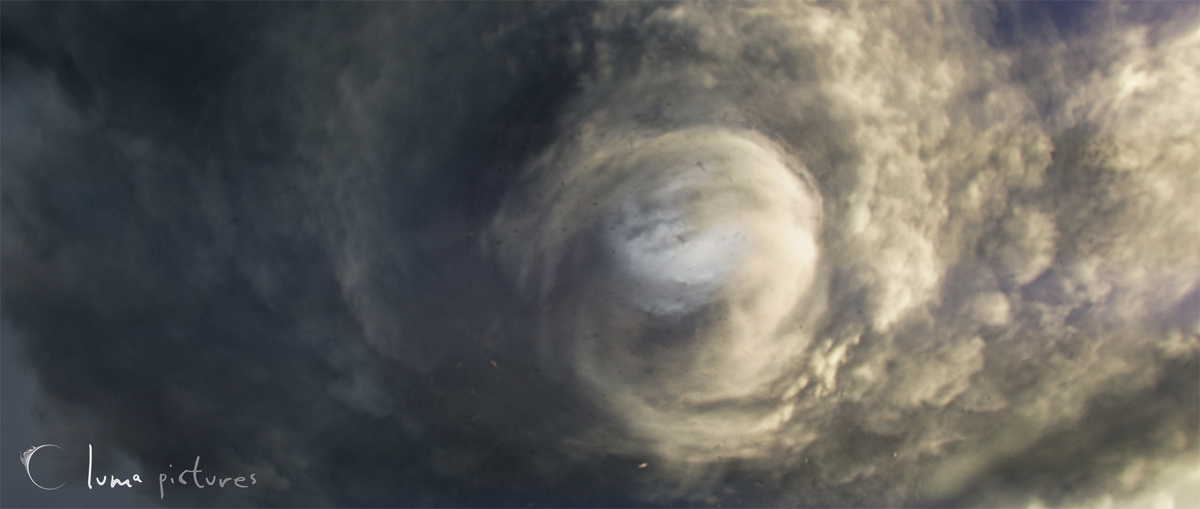 |
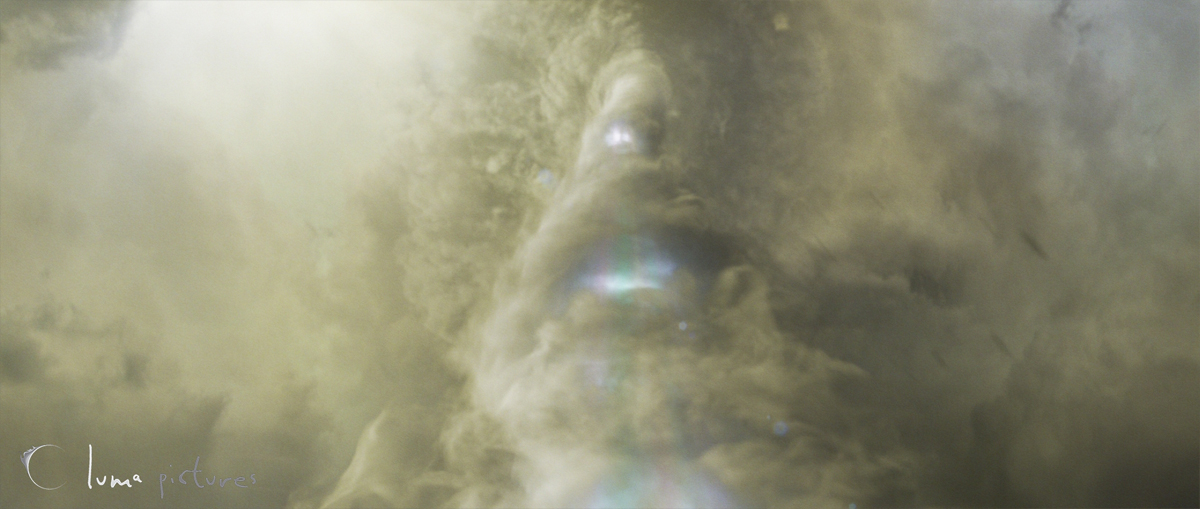 |
Can you explain the creation of The Destroyer?
Richard Sutherland, CG Supervisor // Marvel provided a 3d sculpt of the Destroyer, along with photo reference of an almostfull-size model that had been built. After reviewing the reference, and discussing with the director how the destroyer should move and what he should be made of we produced a series of concepts showing the Destroyer composed of individual metal slats that would slide against each other as he moved. With this concept approved we built a model, slat by slat, in Maya and rigged it with a custom built system to assure that each moved in concert with the others.
What were your references for The Destroyer and for its animation?
Raphael A. Pimentel, Animation Supervisor // In animation, an abundance of references were used in molding The Destroyer’s swagger and iconic battle poses. Some of the most used materials were comic books, armored knight battles, suited bomb squads units and wild west films (for the face off at high noon showdown with Thor).
Pavel Pranevsky, CG Supervisor // For the metallic surface of the Destroyer, we researched weathered and worn battle armor as well as gun metal reference. While seemingly simple, achieving the final look of the Destroyer was more complex than it seems. The final metallic look was a combination of shader layering and compositing techniques, that allowed us to finely tune his appearance on a shot-to-shot basis.
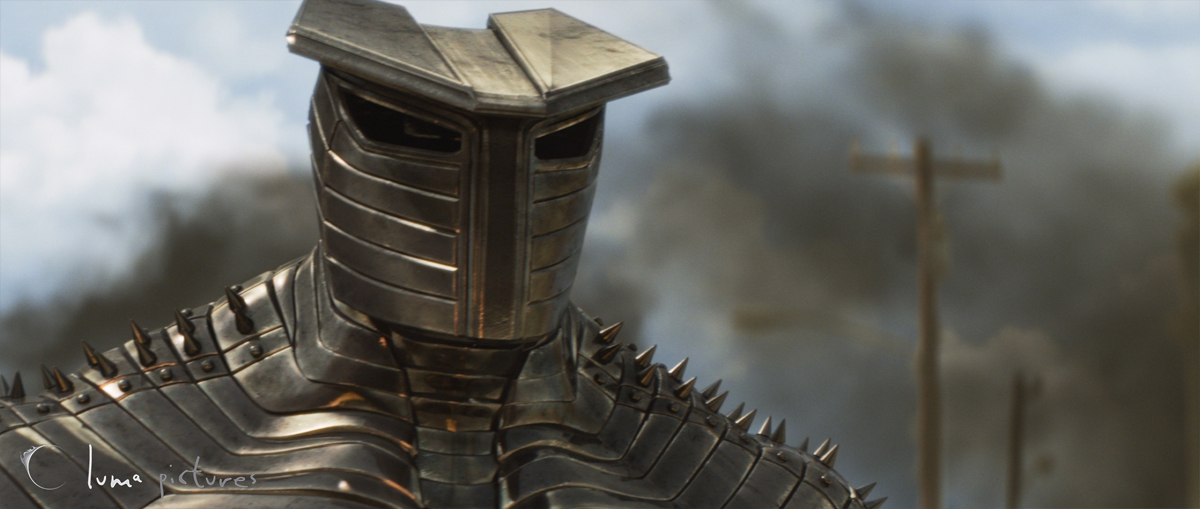 |
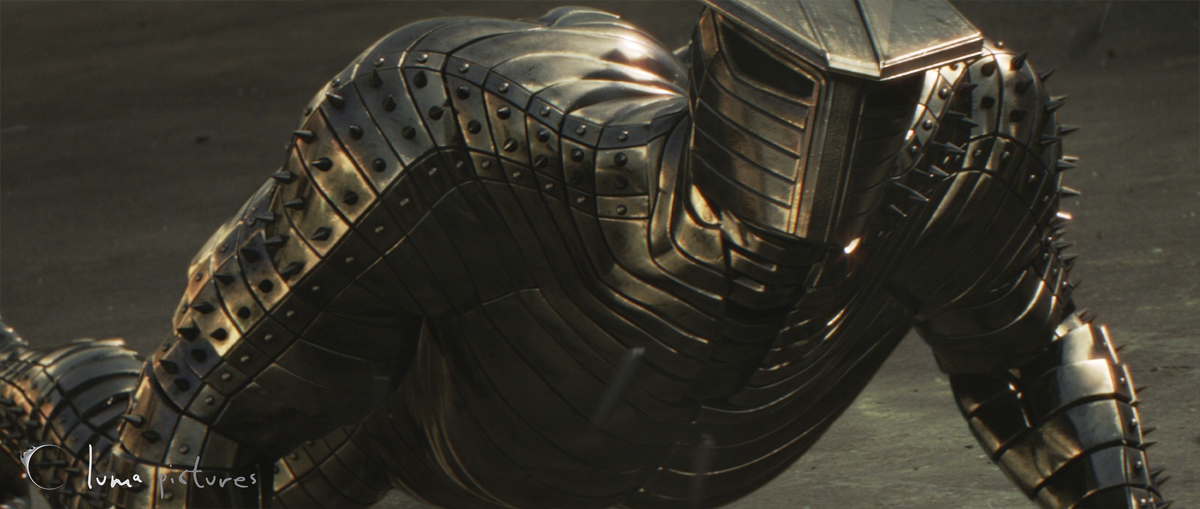 |
How was the shooting of the sequence where the Destroyer destroys the small town?
Justin Johnson, Digital FX Supervisor // Shooting the plates for that sequence was very exciting. The pyrotechnics team demolished the town over a few day period. They were rigging buildings with gasoline and flying debris, using cables to fly cars and stunt people through the air. We would go in after each shot and shoot chrome balls, HDRI, and color charts. The data wranglers were on set constantly recording camera data on 6-7 cameras for each shot. We were using our DSLRs to shoot video and stills of everything on set, capturing as much visual information as we could.
How his presence was simulated it on the set?
Justin Johnson, Digital FX Supervisor // We had a full-scale replica of The Destroyer that initially stood 9 feet tall (but was made much taller once CG) and could be wheeled in and out of the set as needed. It was useful as not only reference plates, but also gave the actors and crew an idea of what exactly was destroying the town. Although we were able to take the look of The Destroyer a step further in our CG incarnation, the practical Destroyer plates shot on set served as a priceless tool to lock down the look of the surface properties in the given environment.
Was the metallic look of The Destroyer a challenge to achieve?
Pavel Pranevsky, CG Supervisor // The look of the metal was fairly complex, and certainly presented some technical challenges. Because The Destroyer was so reflective, it was imperative that we got solid on-set lighting reference to make sure that the character looked like he « belonged » in the plates. We carefully matched up HDR images captured on set, with partial photogrammetry of the set environment, camera projections of plate photography as well as various smoke and fire elements, to create a kind of virtual environment for The Destroyer to reflect. On the technical side of rendering and compositing The Destroyer, we had to strike a good balance between clean useable renders and acceptable render times.
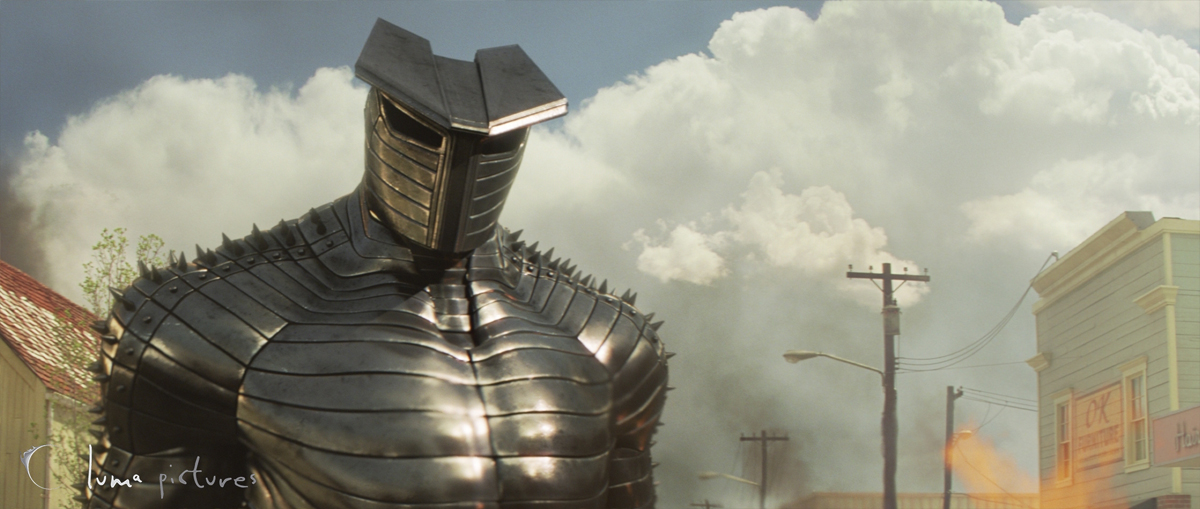 |
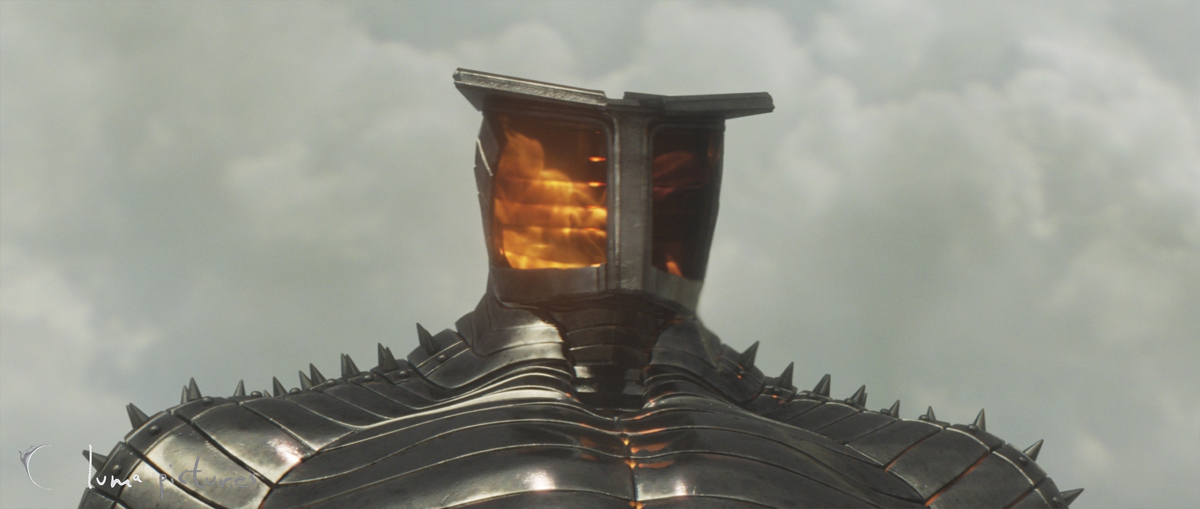 |
How did you create the interactions between the Warriors and The Destroyer, especially the shot where Sif jumps on his back?
Raphael A. Pimentel, Animation Supervisor // The most enjoyable shots for an animator to work on are the ones where digital characters interplay with the actors. In the sequence where Sif attacks The Destroyer, the footage was shot with Sif standing on a platform over a green screen back drop. The platform was then lowered from a 45 degree angle to a resting horizontal position. Luma animators then took this footage into Maya, in order to accurately retime the footage with an animated reacting Destroyer. Also giving more freedom to the animator to enhance Sif’s jumping distance and impact. Luma animation takes pride in maximizing the interaction of characters by combing through the frames looking for (the subtle) key points to play out actions that might call for reactions and vise versa, creating a granular fine relationship between the subjects and maximizing on the believability of the scene.
Pavel Pranevsky, CG Supervisor // Our animation team did a stellar job of doing digital-double matchmoves for all the character interactions with the Destroyer. A digital double of Sif was rigged and animated to match her real performance, which we could later use in lighting and rendering to simulate the interaction with our cg character. We used projections of plate photography, combined with some texture work from our asset department, to achieve a seamless match between the real Sif and our digital Destroyer.
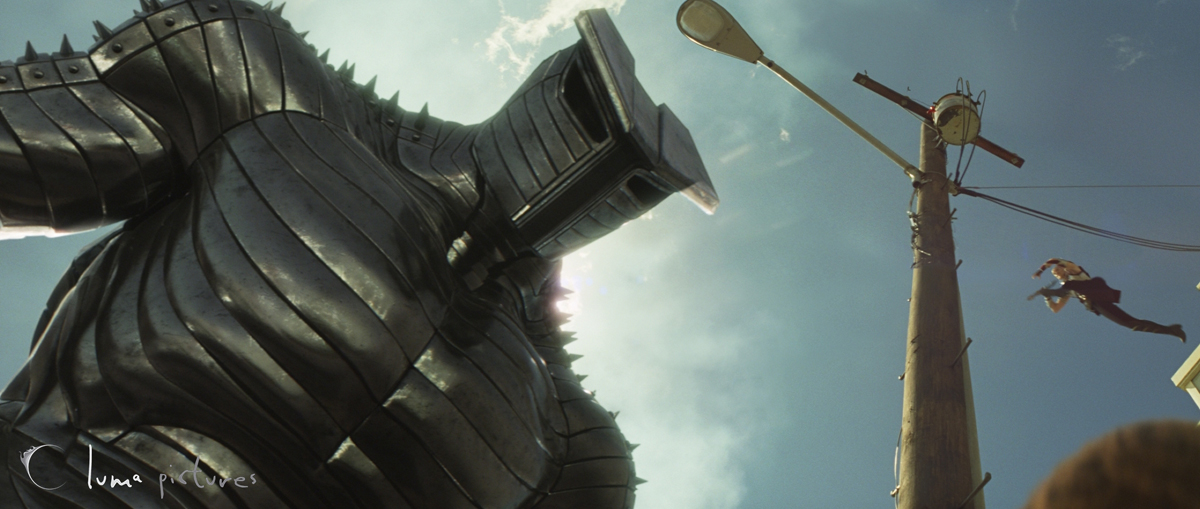 |
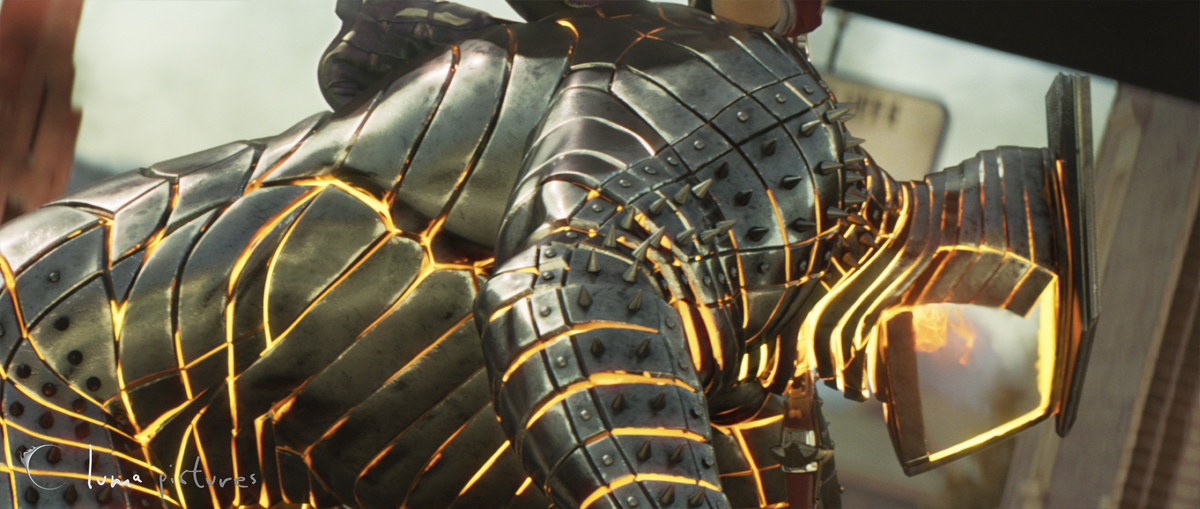 |
The Destroyer uses a beam of fire, how did you design and animate it?
Richard Sutherland, CG Supervisor // Based on the initial concepts from Marvel, we did a variety of tests to find the right balance between fire and energy in the beam. It had shoot quickly, like a laser, but seem like it was made of fire. Finding the right balance of licking, trailing flame and hot energy core was tricky, but I think we found a good balance. In the end the beam was a combination of volumetric fire simulations, and rendered geometry.
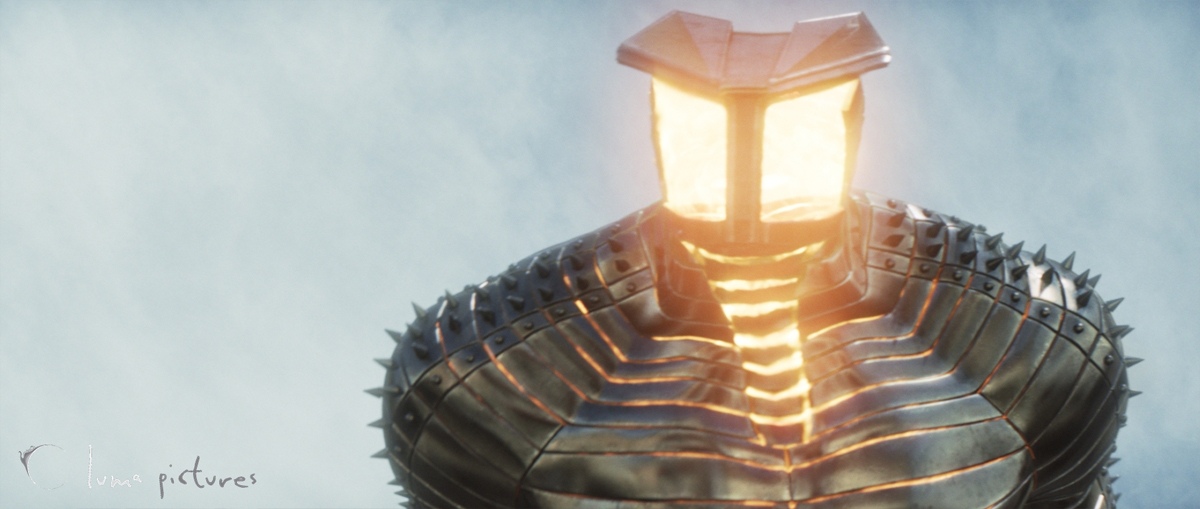 |
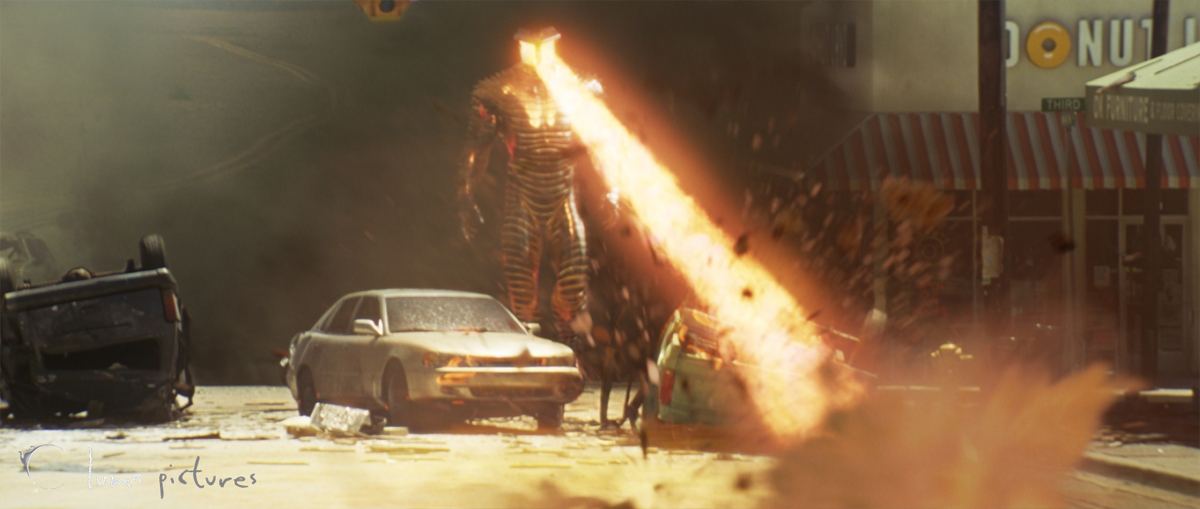 |
How did you create the arrival of the hammer and the armor of Thor?
Richard Sutherland, CG Supervisor // We had a bit of artistic liberty on that particular part of the sequence. The travel of the hammer from the Shield base to the town was pretty locked down, but the transformation effect concept was not entirely finished when we started in post production. We have a very talented technical animator, who came up with a few different examples of the armor forming on Thor’s body using a variety of hand animated and procedural techniques. Once a concept was approved he added a bunch of lighting to tie the formation together.
Can you explain the creation of the impressive fight between Thor and the Destroyer? With so many elements to manage, was this complicated to execute?
Richard Sutherland, CG Supervisor // For the Thor and Destroyer battle, we received plates and post-viz from production for each shot. Then our animation team blocks in the action of the Destroyer and his beam, any storm or debris elements, and a digital double Thor where needed. Once the blocking is approved and animation is completed, the shot goes through our lighting and effects teams. Lighting produces renders of the Destroyer and Thor, while the effect team provides storm elements, beams and explosions. Our compositing team layers all of these elements over the plate making everything fit together to complete the shots. The more complex shots of the Destroyer and Thor fighting in the storm could sometimes include over 100 render passes! We completed those shots in stereo, so each render pass had both a left and right eye, doubling the data and management overhead. Fortunately, we have a wonderful shot tracking system we developed which helps all of our artists stay synchronized. Each artist can publish elements to be included in the final shot, and the compositors receive notifications of new elements to include which they can automatically bring into their Nuke scripts.
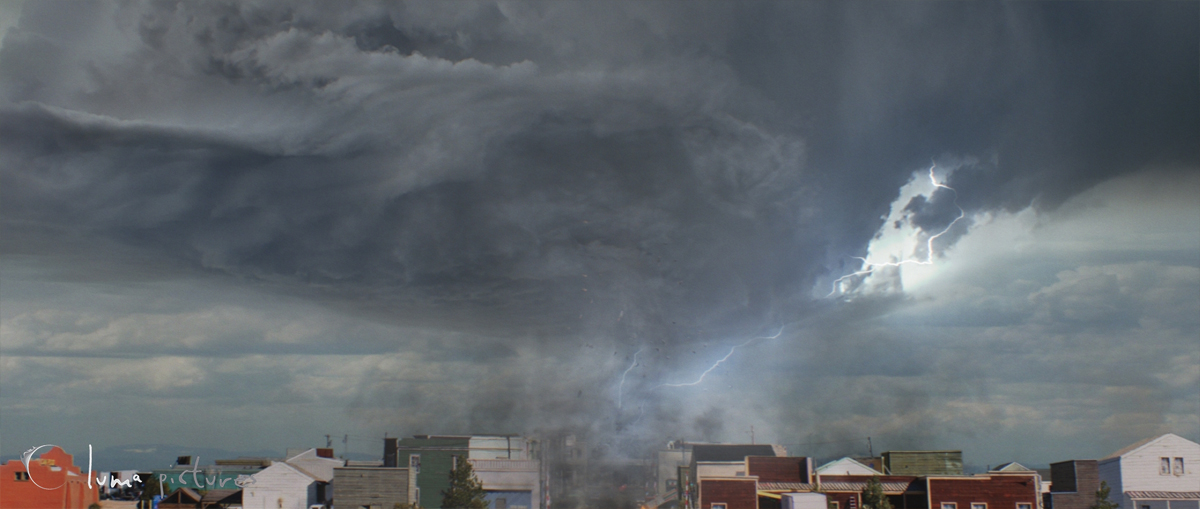 |
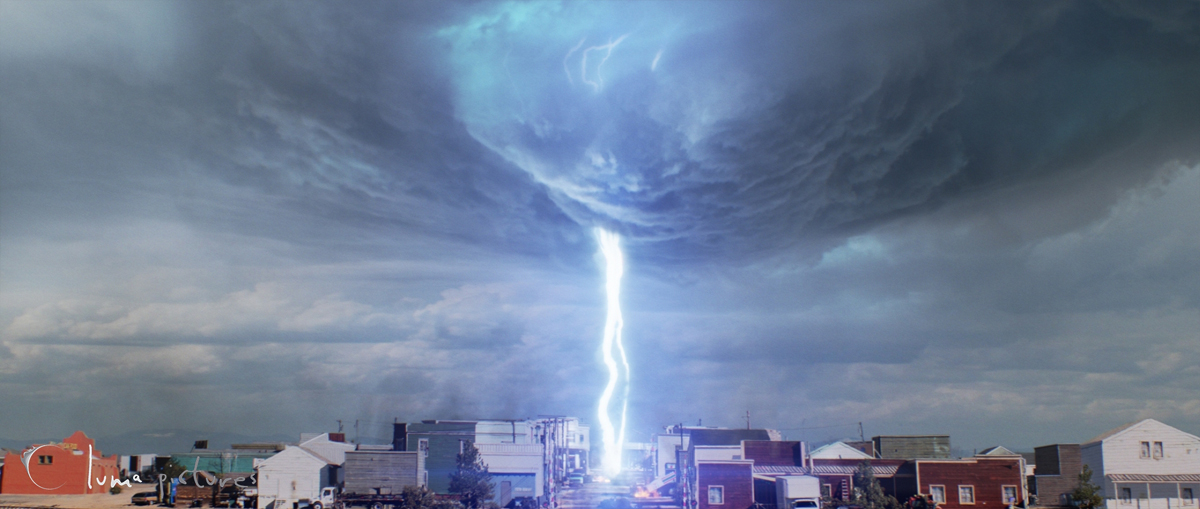 |
What was the biggest challenge on this project?
Steven Swanson, Senior Producer // The majority of our shots were relatively epic in that they had many, many CG elements (the Destroyer, dust debris, smoke, ash, fire, storm clouds, lightning etc). In particular, Destroyer and Bifrost arrival look development extended well into the shot production schedule, which meant we had to rapidly propagate changes to a significant number of shots. In addition, sequence edits were constantly improving which required being nimble in all departments. In my book, the real heroes of THOR were the outstanding production side team and Luma’s own rock stars who rose to the occasion to meet these creative and logistic challenges.
How long did you work on this film?
Steve Griffith, VFX Producer // From asset creation, through shot production and 3D deliveries, the whole project took 15 months – from start to finish.
What was the size of your team?
Steve Griffith, VFX Producer // Our crew for this film was roughly 80 team members (the vast majority being Luma?s core staff), between sups, artists, production management, and support staff.
What do you keep from this experience?
Vincent Cirelli, VFX Supervisor // There is a profound amount of detail and energy that has been injected into the DNA of all the Marvel characters and their worlds, and it is with this measure of scrutiny that we poured over every element we created in CG for THOR. I believe this to be the key to Marvel’s substantial success and very loyal fan base.
What is your next project?
We are currently in production on X-MEN: FIRST CLASS, NOW, CAPTAIN AMERICA: THE FIRST AVENGER and FRIGHT NIGHT.
A big thanks for your time.
// WANT TO KNOW MORE ?
– Luma Pictures: Dedicated THOR page on Luma Pictures website.
// THOR MOVIE CLIP – Meet the Destroyer
© Vincent Frei – The Art of VFX – 2011







The original inspiration for the term « Bomb It ».